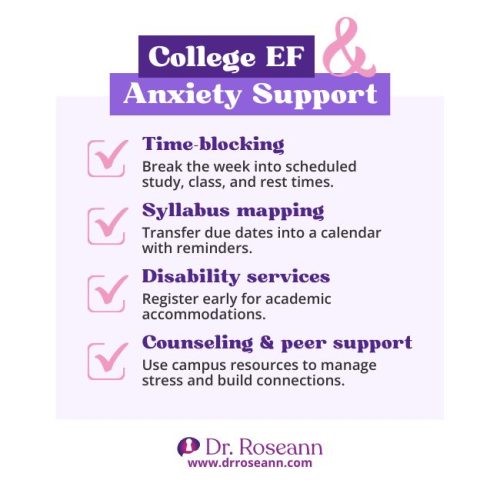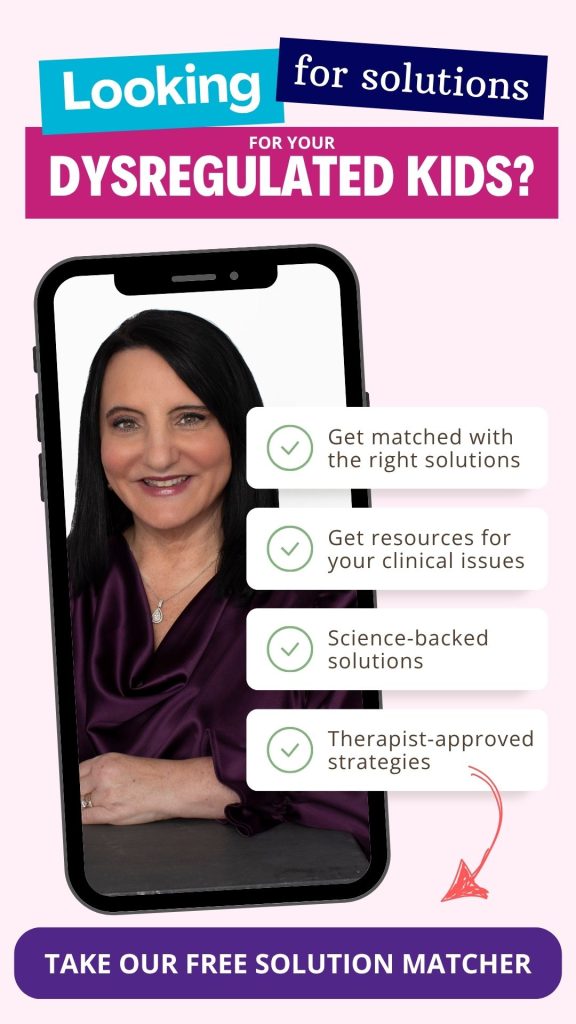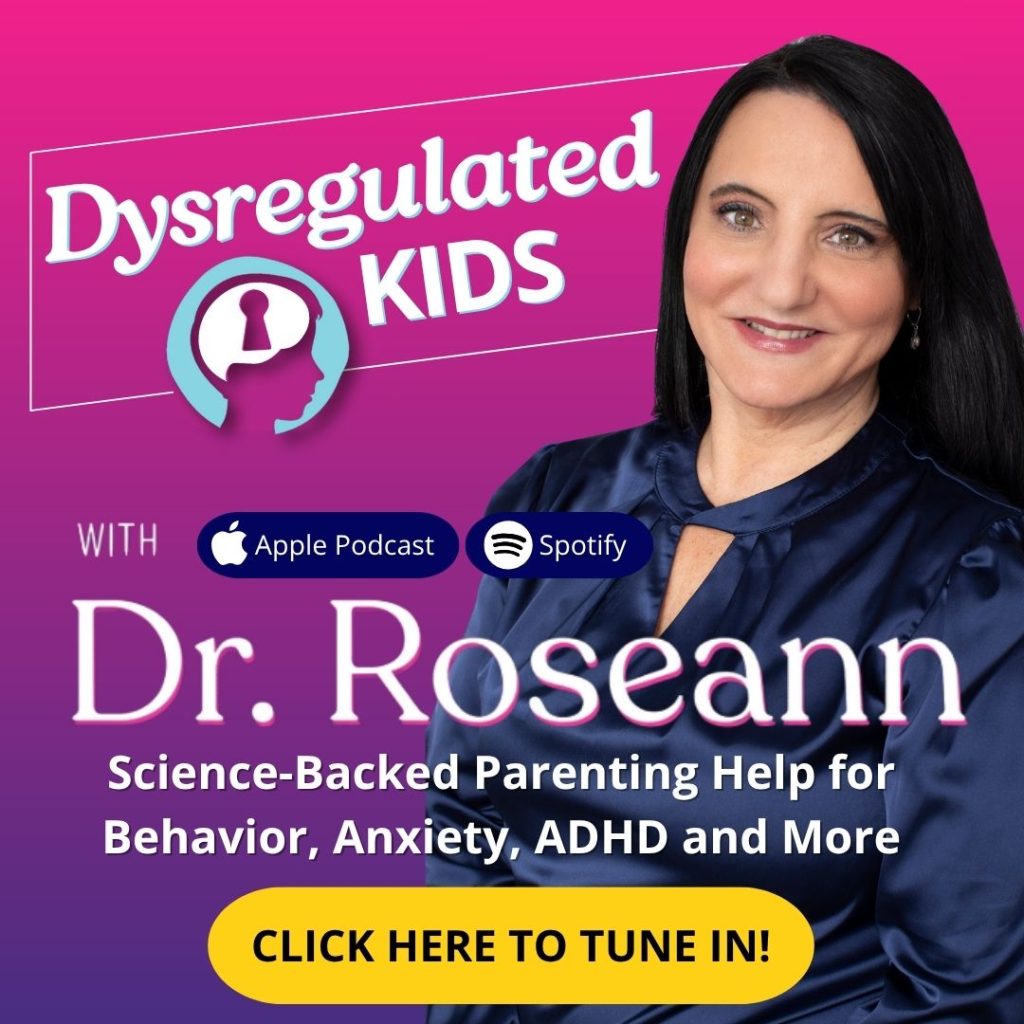Estimated reading time: 8 minutes
Does your child freeze, melt down, or procrastinate the moment a task gets “real?” This guide explains why—and what to do next.
If your child’s behavior feels out of control lately, you’re not alone. When executive functioning and anxiety collide, even simple tasks can feel impossible.
The good news? When we calm the brain first, kids learn skills. Their confidence grows, and follow-through improves.
This article explains how executive functioning and anxiety feed each other and what signs to watch for. You’ll also get practical steps, parent stories, and a compassionate plan grounded in neuroscience.
How Anxiety Affects Executive Functioning
Executive functions are the brain’s self-management skills. It helps kids plan, prioritize, remember, start, and finish tasks.
Psychologist Adele Diamond calls EFs “a family of top-down mental processes needed when you have to concentrate and pay attention.” (Diamond, 2013).
How Anxiety Gets in the Way
Anxiety hijacks attention, pushing the brain to scan for threats instead of goals. Eysenck et al. (2007) show that anxiety weakens goal-directed attention. It boosts stimulus-driven distractions—exactly why your child can get lost in YouTube when they meant to open Google Docs.
Key Takeaways
- Anxiety narrows attention to “what-ifs,” draining working memory and task focus (Eysenck et al., 2007).
- Core EF skills include inhibition, working memory, and cognitive flexibility (Miyake et al., 2000).
- Stress, poor sleep, and loneliness impair EFs. So, regulation and connection are not “extras,” they’re essential (Diamond, 2013).

Is It ADHD, Executive Dysfunction, Or Both?
Parents often ask, “Is this ADHD or executive dysfunction?” ADHD is a clinical diagnosis; executive dysfunction describes the skills gap you see day-to-day.
Many kids with ADHD have EF challenges, and anxiety can magnify EF gaps. Or sometimes mask others (e.g., a highly anxious child might look overcontrolled yet be mentally overloaded).
| Feature | ADHD | Anxiety | Executive Dysfunction |
|---|---|---|---|
| Primary driver | Attention/impulse regulation | Threat/worry response | Skill gaps in planning, remembering, and shifting |
| What you see | Distractible, impulsive, inconsistent | Perfectionism, avoidance, somatic complaints | Procrastination, lost materials, incomplete tasks |
| Overlap | EF weaknesses common | Anxiety taxes EF | Can occur with or without ADHD/anxiety |
Pro tip: Whether or not there’s a diagnosis, skills can be taught and strengthened. It is especially when we calm the nervous system first. (Diamond, 2013).
Parent story (Julia & Max, age 10):
Max “knows” the math but melts down at word problems. We built a Regulate → Connect → Correct routine: 3 calm breaths + fidget, then read one sentence at a time and circle keywords. In two weeks, Max started independently, and anxiety dropped because the sequence felt safe.
Why Smart Kids “Know It” But Can’t Start/Finish Work
Working memory and task initiation rely on a calm, focused brain. So, when kids can’t “see” the end product, they lean on adults to organize, remind, and rescue. That creates a frustrating cycle for everyone.
What’s Happening Under the Hood
- Working memory overload → Directions leak before action happens.
- Inhibition fatigue → Hard to resist phone pings or intrusive worries.
- Cognitive inflexibility → “If it isn’t perfect, I can’t start.”
Try This Today
- Micro-starts: Underline the verb in the prompt. Start with two sentences or five minutes, not the whole paper.
- Visual finish line: Insert a simple checklist at the top of the page: plan → draft → proof → submit.
- Co-regulation cue: Pair work with a calming sensory input (weighted lap pad, gum, chair band).
How To Reduce Anxiety-Driven Shutdowns
Let’s calm the brain first. Then skills stick.
The 5 x 5 Regulation Reset (daily)
- 5 breaths (4-in/6-out) + 5 wall pushes (release muscle tension)
- 5-minute movement break before homework
- 5-line micro-goal for writing or tasks
- 5-sense grounding (name 1 thing you see/hear/feel/smell/taste)
- 5-point check-in (Where’s my stress? What’s one support I need?)
Mid-task anchors
- Timeboxing: Set a 10-minute timer and stop on purpose. Anxiety decreases when stopping is part of the plan.
- Externalize working memory: Sticky notes or a 3-box board (Now / Next / Done).
- Compassionate accountability: “When the timer dings, we’ll decide together—continue or pause.”
Parent story (Priya & Sam, age 7):
Sam “wandered” during morning routines. Priya posted picture cards: potty, clothes, breakfast, and backpack. They practiced the order on a calm Saturday. On school days, Sam races to flip cards to “Done.” Transitions are smoother because the brain can see success.
“EFs can be improved… including with mindfulness, movement, and targeted practice.” — Adele Diamond, PhD (2013).
How To Prepare For Changes in Middle School, High School, and College
As writing demands and independence rise, structure shrinks. This is especially true at college. So, output often dips.
It doesn’t mean your teen is lazy. What it means is that support didn’t grow with demands.
Build the Bridge Now
- Middle school: Teach planner routines and weekly “sweep” (backpack/locker reset).
- High school: Practice long-term planning with visible milestones; pair with teacher email scripts.
- College: Replace school-day scaffolds with self-scaffolds: time-blocking, professor office hours, peer study pods, campus disability services.
Parent story (Andre & Maya, 18, first-year):
Maya performed well in a structured high school environment but struggled in college. We set up a 90-minute “focus lab” at the library three times a week. Maya used noise-canceling headphones, a written task stack, and a check-out text to Dad. Within a month, missing assignments dropped.

Helpful School Supports and Routines
Make supports visible and repeatable. Aim for consistent cues that lower anxiety and free up EF.
High-impact supports
- Front-load clarity: Examples, rubrics, and models before
- Chunking & checkpoints: Smaller due dates with teacher sign-offs.
- Alternative demonstrations: A slide deck or a recorded oral summary can be used when writing load is the barrier.
- Calm corners & sensory tools: Headphones, movement breaks, doodle pads.
“Executive functions are separable but related skills—inhibition, updating (working memory), and shifting.” — Miyake et al., 2000.
When To Seek Deeper Evaluation or Therapy
Consider more support if anxiety or EF gaps are blocking daily life (school refusal, frequent shut-downs, failing grades, family conflict).
Helpful Next Steps
- Evaluation: A thorough history plus EF measures. Consider QEEG when appropriate to inform a neurofeedback plan.
- Therapies & training: Cognitive-behavioral strategies for anxiety, parent coaching, school collaboration, and (when indicated) neurofeedback.
- Lifestyle pillars: Sleep, movement, nutrition, and co-regulation every day—they directly support EF (Diamond, 2013).
“Anxiety reduces attentional control and increases distractibility, especially under stress.” — Eysenck et al., 2007.
Grab my Executive Functioning Parent Toolkit for simple scripts, routines, and a one-week Regulate → Connect → Correct™ plan you can start today.
From Overwhelm to Calm: What Parents Can Do Next
When executive functioning and anxiety collide, remember: your child isn’t being defiant—behavior is communication. It’s their dysregulated brain signaling a need for safety and structure.
Here’s where to begin:
- Regulate first: Calm the nervous system before anything else.
- Simplify the start: Break tasks into small, doable steps.
- Show success: Use visible checklists and celebrate tiny wins.
- Practice calm routines: Build habits when everyone is regulated, not in crisis.
Progress may come in waves, not in a straight line. But with consistency, your child can grow more confident, independent, and resilient. There is hope—and it’s gonna be OK.
FAQs on Executive Functioning and Anxiety
How often should we practice executive functioning routines?
Aim for short daily practice, just 5 to 10 minutes. With EF skills, consistency matters more than intensity.
Will perfectionism improve if we “push harder”?
Usually, the opposite happens, pushing raises anxiety. Instead, co-create small, realistic goals and celebrate the process, not just the product.
Should we take away all screens to help with focus?
Not always. It’s better to set clear guardrails, like timers, app blockers, and keeping devices out of sight during work periods.
Does medication fix executive dysfunction and anxiety?
Medication can ease symptoms for some kids. But skills and routines are still essential, especially when anxiety is part of the picture.
Citations
Diamond, A. (2013). Executive functions. Annual Review of Psychology, 64(1), 135–168. https://doi.org/10.1146/annurev-psych-113011-143750
Eysenck, M. W., Derakshan, N., Santos, R., & Calvo, M. G. (2007). Anxiety and cognitive performance: Attentional control theory. Emotion, 7(2), 336–353. https://doi.org/10.1037/1528-3542.7.2.336
Miyake, A., Friedman, N. P., Emerson, M. J., Witzki, A. H., Howerter, A., & Wager, T. D. (2000). The unity and diversity of executive functions and their contributions to complex “frontal lobe” tasks: A latent variable analysis. Cognitive Psychology, 41(1), 49–100. https://doi.org/10.1006/cogp.1999.0734
Always remember… “Calm Brain, Happy Family™”
Disclaimer: This article is not intended to give health advice, and it is recommended to consult with a physician before beginning any new wellness regimen. The effectiveness of diagnosis and treatment varies by patient and condition. Dr. Roseann Capanna-Hodge, LLC does not guarantee specific results.
Are you looking for SOLUTIONS for your struggling child or teen?
Dr. Roseann and her team are all about science-backed solutions, so you are in the right place!
©Roseann Capanna-Hodge










